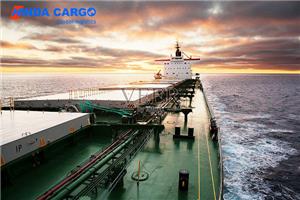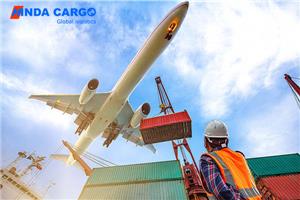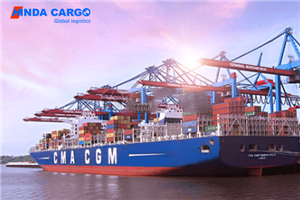How do goods shipping from China to the United States?
China and the United States are the two largest economies in the world and are also one of each other's largest trading partners. Every year, a large amount of goods are exported from China to USA, supporting the prosperous trade between the two countries. So, how do these goods get from China to the United States? From manufacturing to the final destination in the United States, goods need to go through a series of complex logistics and customs clearance processes.
This article will delve into the key links of shipping goods from China to USA to help readers better understand the operating mechanism of international logistics.

The process of shipping goods from China to the United States:
1. Preparation before export
1.1 Production and quality inspection
1.2 Packaging and labeling
1.3 Preparation of export documents
1.4 Customs clearance procedures
2. International transportation of goods
2.1 Ocean transportation
2.2 Air transportation
2.3 Express delivery
3. The import customs clearance process in the United States
3.1 Import declaration
3.2 Customs inspection
3.3 Payment of tariffs and customs clearance
4. Allocation and distribution of goods
4.1 Warehousing and allocation
4.2 Domestic transportation
5. Delivery and receipt
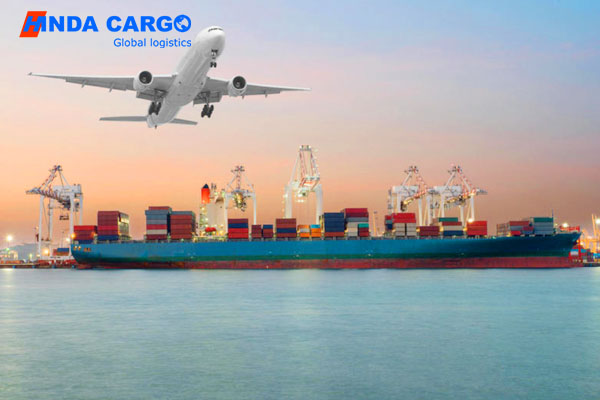
Preparation before export
Before the goods officially depart, exporters need to carry out a series of preparations, including production, packaging, document preparation and customs declaration.
Production and quality inspection
First, after the goods are produced in the factory in China, the exporter needs to ensure that they meet the import standards of the United States. For example, the United States has strict requirements on the safety and environmental protection of products, such as the standards of the U.S. Food and Drug Administration (FDA) for food and drugs, and the safety regulations of the Consumer Product Safety Commission (CPSC) for consumer products. Therefore, exporters usually conduct quality inspections and certifications to ensure that the goods meet these standards and avoid problems at customs.
Packaging and labeling
After the goods are produced, they must be properly packaged. Packaging must not only ensure that the goods are not damaged during long-distance transportation, but also meet international transportation standards. In addition, many products need to be labeled with relevant label information on the outer packaging, such as product name, origin, batch number, etc. Some labeling requirements are required by US law, such as food products must be labeled with ingredient information, electronic products must have FCC certification labels, etc.
Prepare export documents
Before the goods leave the country, exporters need to prepare a series of documents, which will play an important role in customs clearance in China and the United States. Common export documents include:
● Commercial invoice: A commercial invoice is a document that proves the value of the goods, usually including information such as description of the goods, quantity, unit price, total price, etc.
● Packing list: The packing list lists the packaging, weight, volume, etc. of the goods in detail.
● Certificate of Origin: Used to prove the country of origin of the goods, and sometimes it can also be used to enjoy tariff preferences
● Bill of Lading: The bill of lading is a contract and receipt for the transportation of goods and is an important document for customs clearance of sea freight.
The accuracy of these documents is very important, as any error will delay customs clearance or result in the refusal of entry.
Customs declaration procedures
After the goods are ready, the exporter needs to declare to the Chinese customs. Customs declaration refers to submitting detailed information about the export of goods to the customs and paying relevant taxes and fees. During the customs declaration process, the exporter needs to provide the aforementioned documents, such as commercial invoice, packing list, certificate of origin, etc., and fill in the export declaration form. The Chinese customs will inspect the goods to ensure that they are legally exported.
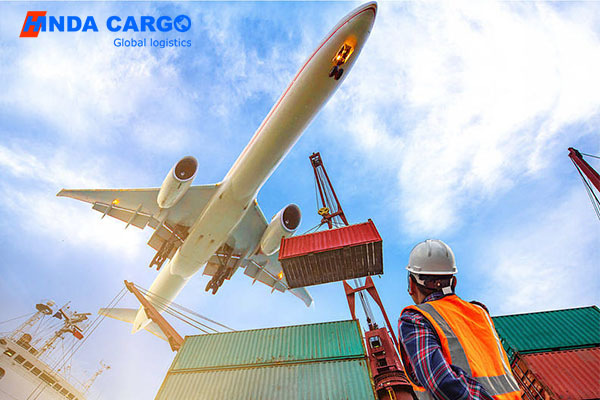
International transportation of goods
After completing the customs declaration procedures, the goods officially enter the international transportation stage. The main modes of international transportation include sea transportation, air transportation and express delivery.
Sea transportation
Sea transportation is the most common mode of transportation between China and the United States, especially for bulk goods or large-volume goods. China has many world-class ports, such as Shanghai Port, Shenzhen Port and Ningbo Port, through which millions of containers are exported to the United States every year.
The general process of sea transportation is as follows:
● Container loading: After the goods are packed in the factory, the container will be transported to the port and loaded. During this process, the goods will undergo security checks such as X-ray scanning to ensure that there are no illegal items.
● Sailing: The cargo ship departs from the port of China, crosses the Pacific Ocean, and finally arrives at the port of the United States. The sailing time is generally 15 to 30 days, depending on the specific route and the port of destination.
● Unloading: After the goods arrive in the United States, the container will be unloaded and transferred to the port warehouse in the United States to wait for customs clearance.
Air freight
Air freight is suitable for small, high-value goods that need to be transported quickly, such as electronic products, clothing and medical supplies. Air freight cargo is shipped from major international airports in China, such as Shanghai Pudong International Airport or Beijing Capital International Airport, to major airports in the United States, such as Los Angeles International Airport or New York JFK International Airport, by direct flights.
The advantage of air freight is that it is fast, usually only 1 to 3 days to complete the transportation. However, correspondingly, the cost of air freight is higher, and there are restrictions on the weight and volume of goods.
Express delivery
For small packages or e-commerce orders, international express delivery (such as DHL, UPS, FedEx) is a more common choice. Express companies provide door-to-door service, delivering directly from warehouses in China to consignees in the United States. Express services can generally be completed within a few days, but the cost is higher and is suitable for lightweight and time-sensitive goods.
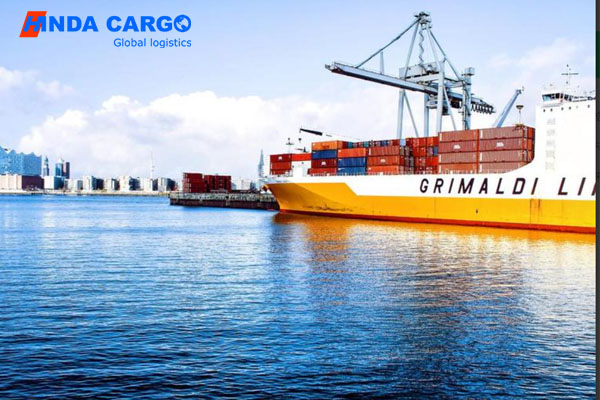
Import customs clearance process in the United States
After the goods arrive at the US port or airport, the next step is to go through the import customs clearance procedure of the US Customs. This is a crucial link because any mistakes or violations may result in the goods being detained or delayed.
Import declaration
After the goods arrive in the United States, the importer or its agent (usually a freight forwarder or customs broker) needs to make an import declaration to the US Customs and Border Protection (CBP). The documents for import declaration include:
● Commercial invoice: A commercial invoice for the goods is also required to prove its value.
● Bill of lading: Used to prove that the goods have arrived at the US port or airport.
● Import license: Some goods (such as food, medicine, and chemicals) may require an import license.
Importers need to determine the tariff rate to be paid based on the HS code (international customs commodity code) of the goods and pay the corresponding taxes when declaring.
Customs inspection
The U.S. Customs will randomly check goods and conduct security checks based on the risk assessment model. These checks may include X-ray scans, unpacking inspections, etc., aimed at ensuring that the goods are legal, comply with safety regulations, and prevent the entry of smuggling, drugs, and terrorist items.
Certain sensitive goods (such as food, medicine, etc.) also require additional inspections, such as inspections conducted by the FDA. If the goods fail the inspection, they may be detained until the problem is resolved.
Paying tariffs and customs clearance
After the inspection is completed, the importer needs to pay tariffs. U.S. tariffs vary depending on the type of goods and the place of origin, and some goods may enjoy preferential tariff treatment. After the tariff is paid, the customs will issue a customs clearance permit, and the goods can leave the port or airport and enter the U.S. circulation market.
Distribution and delivery of goods
After customs clearance, the goods will enter the logistics distribution and distribution link. At this time, the goods need to be transported from the U.S. port or airport to the final destination, such as a warehouse, retail store or directly to consumers.
Warehousing and distribution
Most goods will be transported to warehouses for short-term storage after customs clearance. Goods can be sorted, repackaged or combined at the warehouse according to customer needs, and then distributed through the domestic logistics network in the United States.
The United States has a well-developed warehousing and distribution system, especially in large port cities such as Los Angeles, New York and Miami, where logistics facilities can handle large quantities of import and export goods and ensure that goods are efficiently distributed throughout the United States.
Domestic transportation
After the warehouse completes the distribution, the goods will be transported to various destinations across the United States by truck, train or air transportation. For bulk goods or long-distance transportation, rail transportation is a common choice; for goods with higher time requirements, truck transportation is more flexible.
The United States has a well-developed road and rail network, making domestic transportation relatively efficient. Depending on the destination, it usually takes 1 to 5 days for goods to be delivered from a US port or warehouse to the destination.
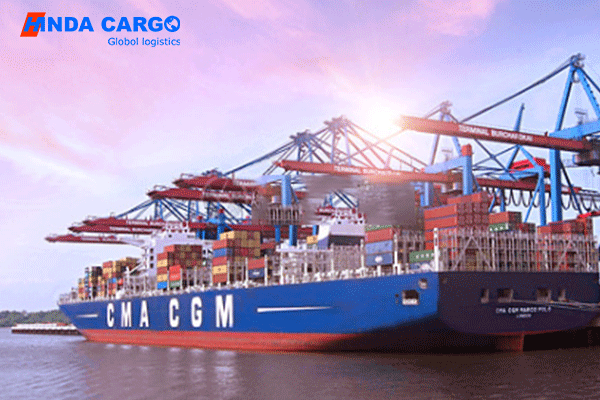
Delivery and receipt
After the goods arrive at the destination, the distribution company or freight forwarder delivers the goods to the consignee. For corporate customers, the goods are usually delivered to factories, warehouses or retail stores; for individual consumers, especially in e-commerce orders, express companies will deliver directly to the door.
At the time of delivery, the consignee needs to inspect the goods to ensure that there is no damage or shortage, and sign for confirmation. At this point, the responsibility of the goods is transferred from the logistics service provider to the consignee, and the entire international transportation process is completed.
In summary, the transportation of goods from China to the United States involves multiple links, including production, export customs declaration, international transportation, US customs clearance, and domestic distribution and delivery. Each link is crucial, and any delay or error in any link will affect the final delivery time of the goods.

